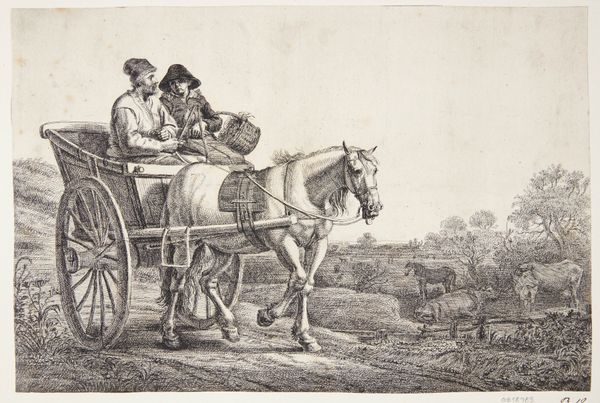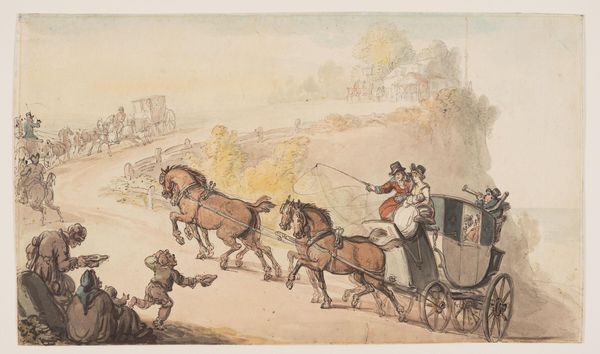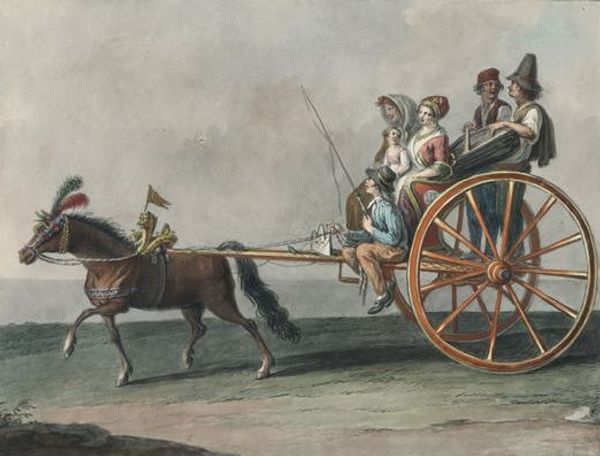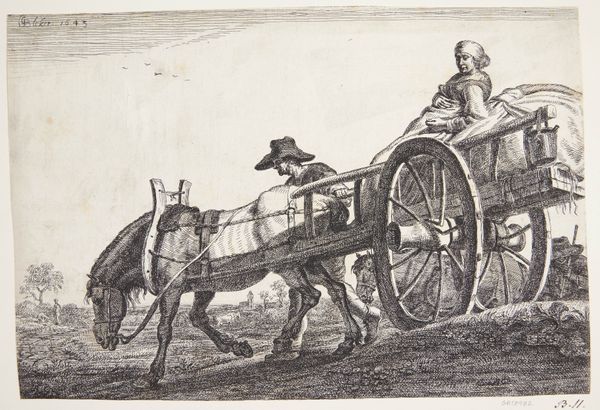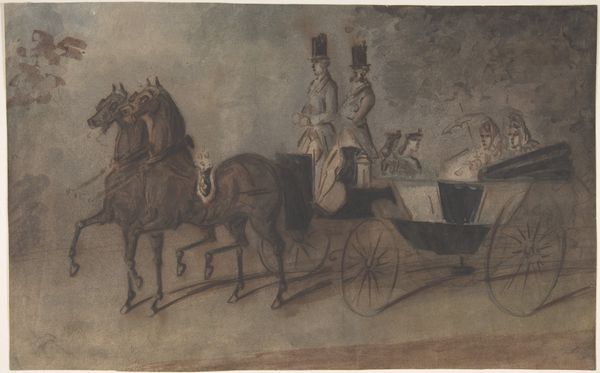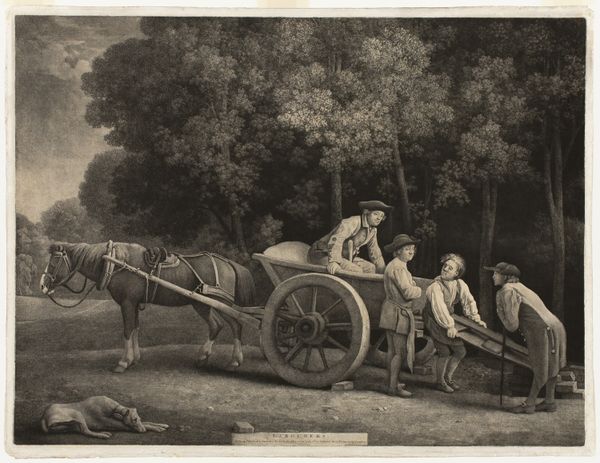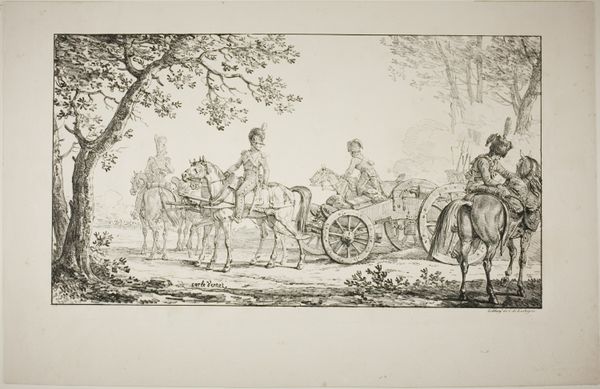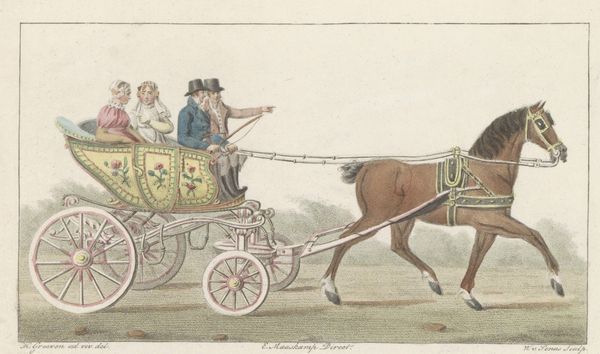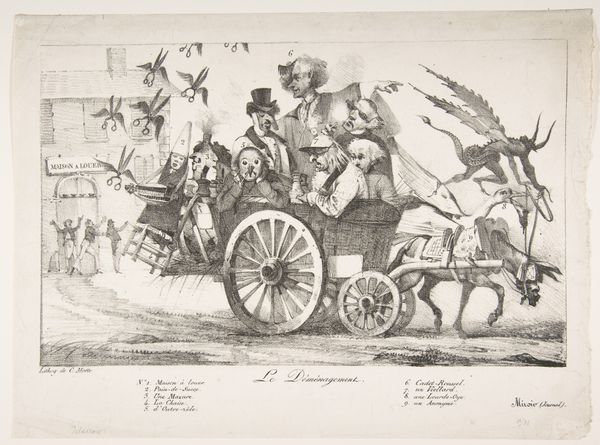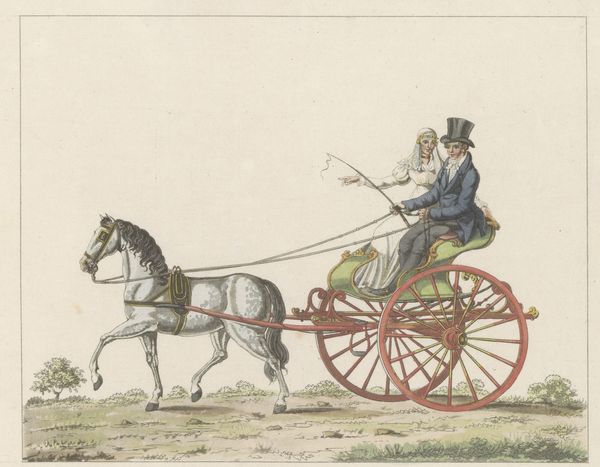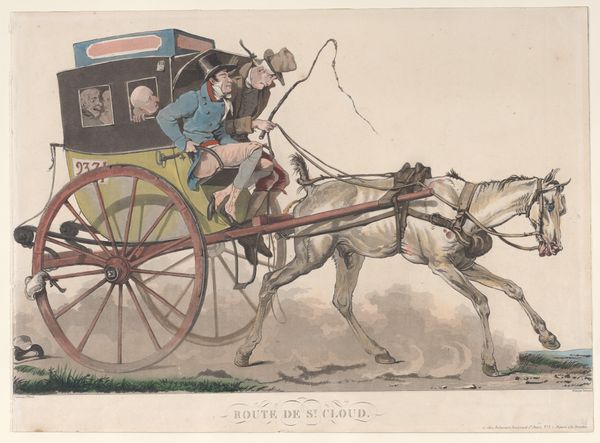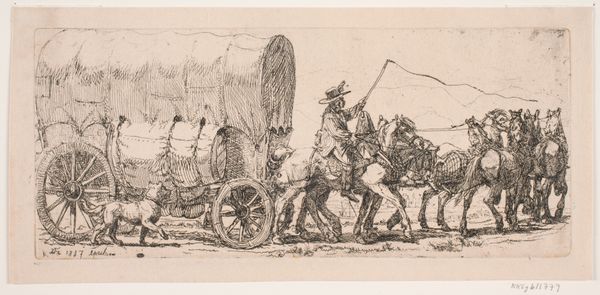
Travel by Stagecoach Near Trenton, New Jersey 1811 - 1816
0:00
0:00
watercolor
#
portrait
#
gouache
#
landscape
#
figuration
#
watercolor
#
underpainting
#
romanticism
#
naive art
#
horse
#
men
#
watercolour illustration
#
genre-painting
#
history-painting
#
watercolor
Dimensions: 6 7/8 x 9 13/16 in. (17.5 x 24.9 cm)
Copyright: Public Domain
Curator: Today we're looking at "Travel by Stagecoach Near Trenton, New Jersey," a watercolor and gouache work by Pavel Petrovich Svinin, dating from around 1811 to 1816. Editor: What strikes me is the directness of it. You see the four horses, clearly rendered, and the coach, painted in bright yellow with the name painted on the side; it has this wonderfully immediate, almost naive quality. Curator: It does have a very immediate quality, and Svinyin was very interested in the ways in which art could give form to experience, but it does partake in that romantic era taste for picturesque scenes and narratives, offering a window into early 19th-century American life for a European audience. Remember, Svinin was a Russian diplomat. Editor: Right, so this isn't just observation, it’s representation intended for circulation back in Russia? Which prompts me to ask: how much artistic license is at play? Are these horses that well-groomed? And that yellow feels very deliberate, drawing the eye to the commodified nature of transit itself. The labor involved is all but invisible. Curator: Absolutely. We have to consider Svinin’s role as essentially crafting an image of America, catering to European expectations and interests. This is a commissioned view, in a sense. I wonder if those finely dressed passengers, and even the African-American coachman, aren’t partly there to underscore certain notions of progress and civility. Editor: Precisely, and I bet if you examined the material sources for this watercolor, the paper itself, the pigments… we’d begin to uncover layers of trade and exchange embedded in this supposedly simple scene of American transit. What seems at first like a quaint mode of travel is also, and maybe more importantly, part of the circulation of people, goods, and also images. Curator: Yes, and consider the institutions that would exhibit and interpret works such as these; they become artifacts that not only document a particular period, but help construct ideas about national identity and historical progress. Editor: A tidy package of social and economic themes bundled into a pretty little landscape. Something to keep in mind next time you happen across an early-19th-century landscape painting. Curator: Indeed. It gives us plenty to reflect on about the past—and its visual afterlives in the present.
Comments
No comments
Be the first to comment and join the conversation on the ultimate creative platform.
